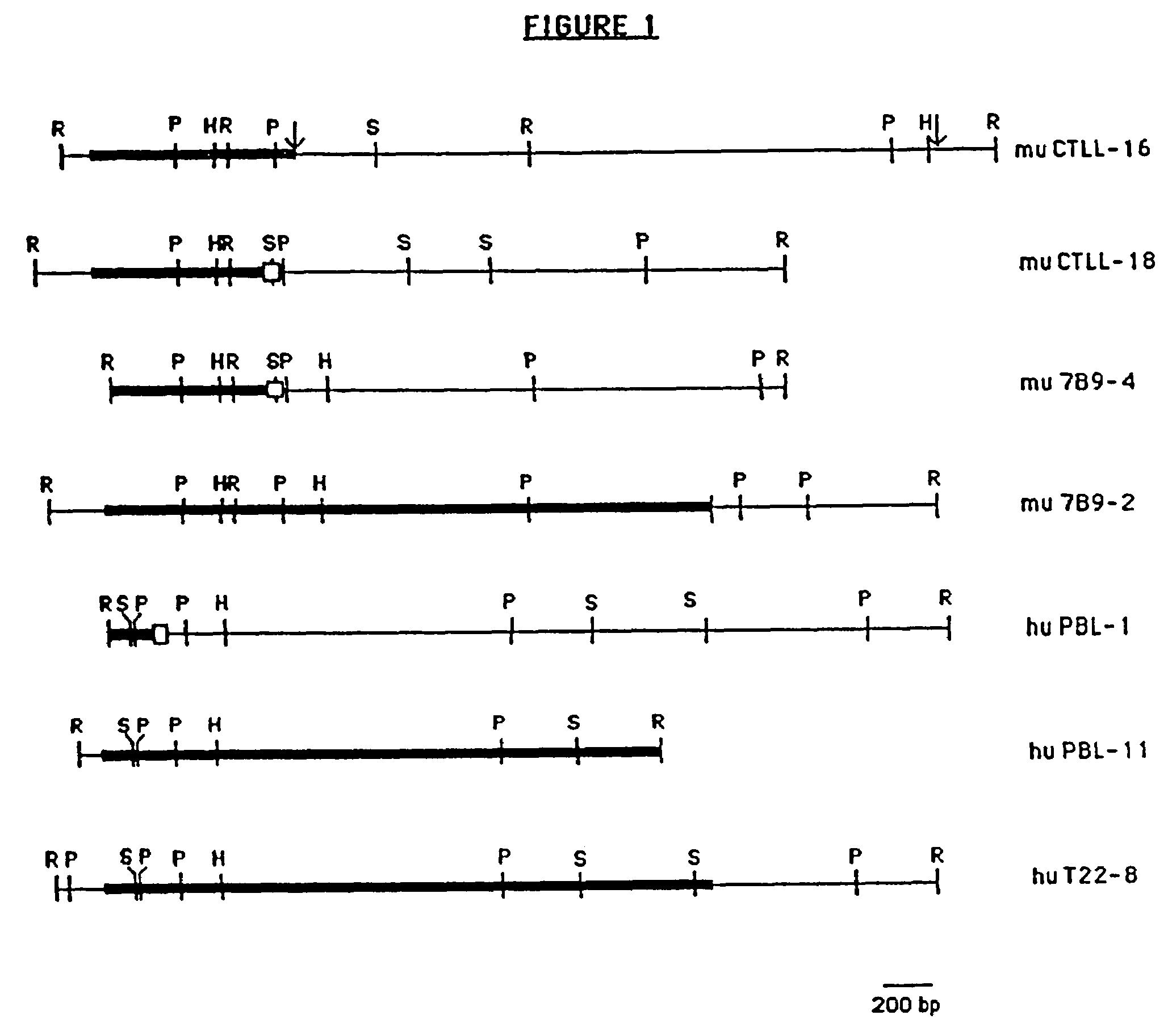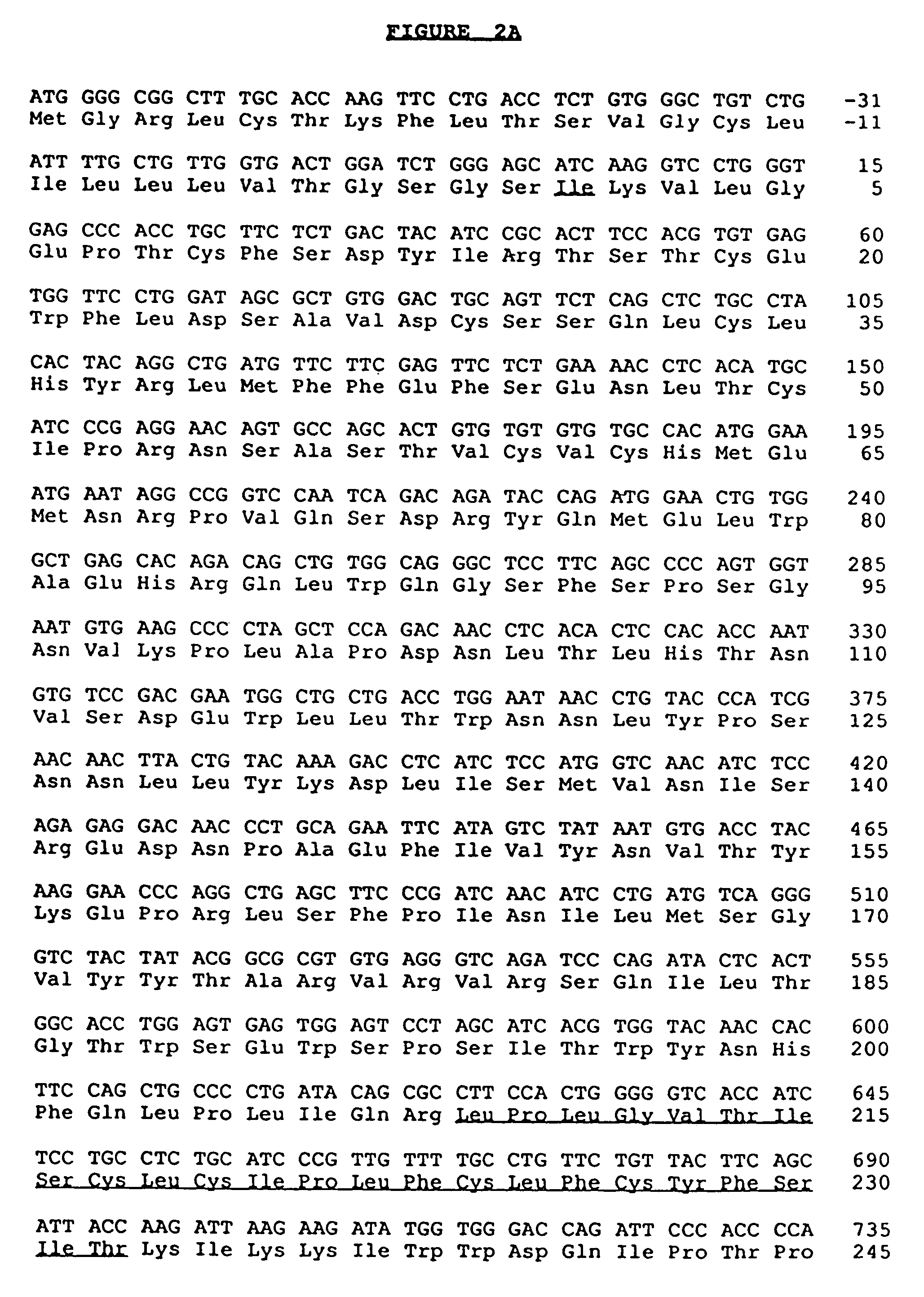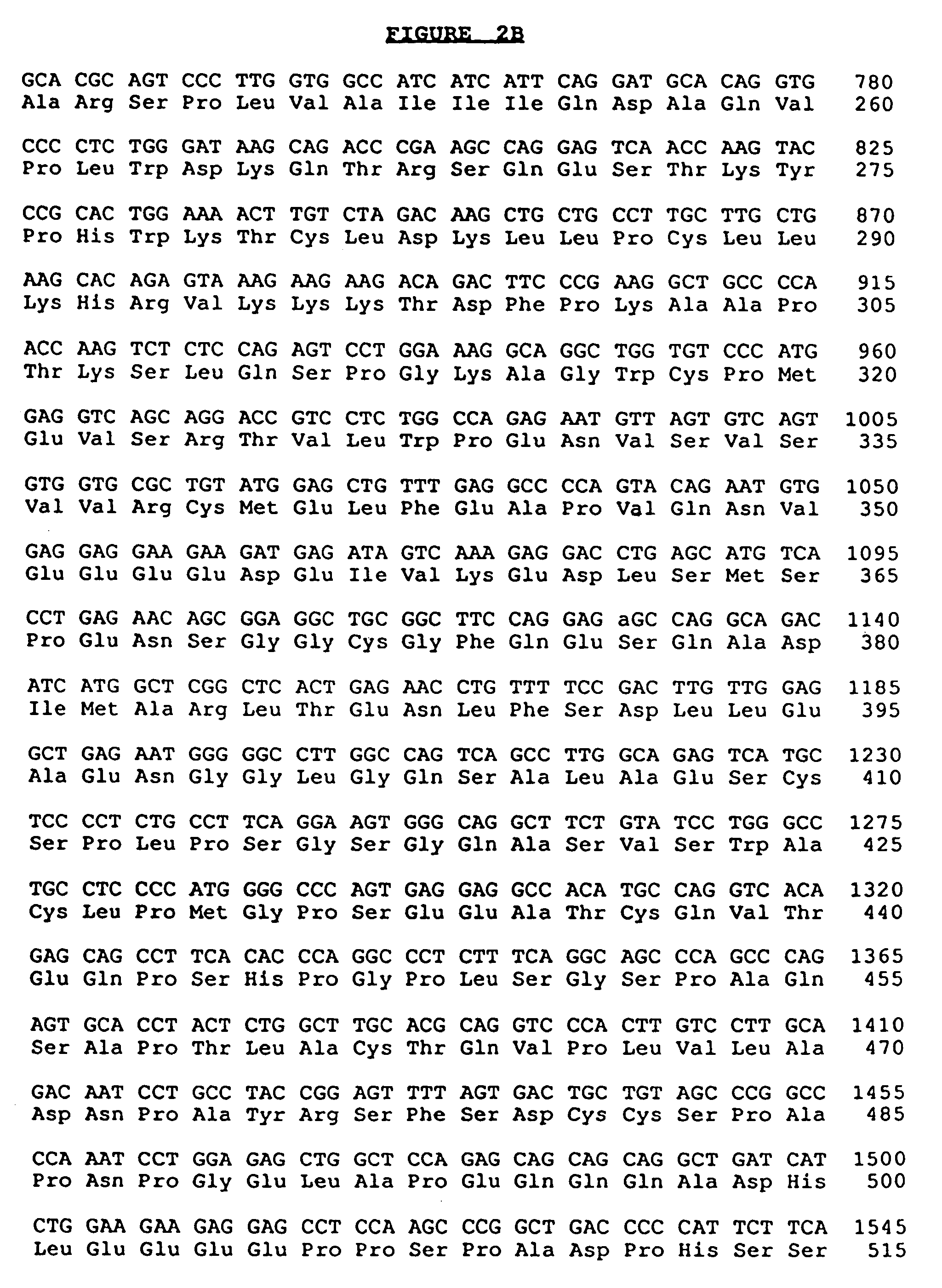Antibodies to Interleukin-4 receptors and uses thereof
a technology of interleukin-4 and receptors, which is applied in the field of cytokine receptors, can solve the problems of limited structural characterization, little progress in characterizing il-4 receptors, and considerable controversy regarding the actual size and structure of il-4 receptors, so as to suppress cytotoxic t cell induction, prevent allograft rejection, and suppress il-4 mediated immune or inflammatory responses
- Summary
- Abstract
- Description
- Claims
- Application Information
AI Technical Summary
Benefits of technology
Problems solved by technology
Method used
Image
Examples
example 1
Binding Assays for IL-4 Receptor
[0080]A. Radiolabeling of IL-4. Recombinant murine and human IL-4 were expressed in yeast and purified to homogeneity as described by Park, et al., Proc. Natl. Acad. Sci. USA 84:5267 (1987) and Park et al., J. Exp. Med. 166:476 (1987), respectively. The purified protein was radiolabeled using a commercially available enzymobead radioiodination reagent (BioRad). In this procedure 2.5 μg rIL-4 in 50 μl 0.2 M sodium phosphate, pH 7.2 are combined with 50 μl enzymobead reagent, 2 MCi of sodium iodide in 20 μl of 0.05 M sodium phosphate pH 7.0 and 10 μl of 2.5% b-D-glucose. After 10 min at 25° C., sodium azide (10 μl of 50 mM) and sodium metabisulfite (10 μl of 5 mg / ml) were added and incubation continued for 5 min. at 25° C. The reaction mixture was fractionated by gel filtration on a 2 ml bed volume of Sephadex® G-25 (Sigma) equilibrated in Roswell Park Memorial Institute (RPMI) 1640 medium containing 2.5% (w / v) bovine serum albumin (BSA), 0.2% (w / v) sod...
example 2
Selection of CTLL Cells with High IL-4 Receptor Expression
by Fluorescence Activated Cell Sorting (FACS)
[0084]The preferred cell line for obtaining high IL-4 receptor selection is CTLL, a murine IL-2 dependent cytotoxic T cell line (ATCC TIB 214) which typically exhibits 2,000 to 5,000 IL-4 receptors per cell and responds to IL-4 by short-term proliferation. To obtain higher levels of IL-4 receptor expression, CTLL cells (parent cells) were subjected to multiple rounds of fluorescence-activated cell sorting with labeled IL-4. A highly fluorescent derivative of IL-4 was derived by conjugating rmIL-4 fluorescein hydrazide to periodate oxidized sugar moieties of IL-4 which was produced in yeast as described by Park et al., Proc. Natl. Acad. Sci. USA 84:1669 (1987). The fluorescein-conjugated IL-4 was prepared by combining aliquots of hyperglycosylated rmIL-4 (300 μg in 300 μl of 0.1 M citrate-phosphate buffer, pH 5.5) with 30 μl of 10 mM sodium m-periodiate (Sigma), freshly prepared in ...
example 3
Detergent Extraction of CTLL Cells
[0087]CTLL 19.4 cells were maintained in RPMI 1640 containing 10% fetal bovine serum, 50 U / ml penicillin, 50 μg / ml streptomycin and 10 ng / ml of recombinant human IL-2. Cells were grown to 5×105 cells / ml in roller bottles, harvested by centrifugation, washed twice in serum free DMEM and segmented at 2000×g for 10 minutes to form a packed pellet (about 2×108 cells / ml). To the pellet was added an equal volume of PBS containing 1% Triton® X-100 and a cocktail of protease inhibitors (2 mM phenylmethysulfonylfluoride, 10 μM pepstatin, 10 μM leupeptin, 2 mM o-phenanthroline and 2 mM EGTA). The cells were mixed with the extraction buffer by vigorous vortexing and the mixture incubated on ice for 20 minutes after which the mixture was centrifuged at 12,000×g for 20 minutes at 8° C. to remove nuclei and other debris. The supernatant was either used immediately or stored at −70° C. until use.
PUM
| Property | Measurement | Unit |
|---|---|---|
| apparent molecular weights | aaaaa | aaaaa |
| apparent molecular weights | aaaaa | aaaaa |
| apparent molecular weight | aaaaa | aaaaa |
Abstract
Description
Claims
Application Information
 Login to View More
Login to View More - R&D
- Intellectual Property
- Life Sciences
- Materials
- Tech Scout
- Unparalleled Data Quality
- Higher Quality Content
- 60% Fewer Hallucinations
Browse by: Latest US Patents, China's latest patents, Technical Efficacy Thesaurus, Application Domain, Technology Topic, Popular Technical Reports.
© 2025 PatSnap. All rights reserved.Legal|Privacy policy|Modern Slavery Act Transparency Statement|Sitemap|About US| Contact US: help@patsnap.com



